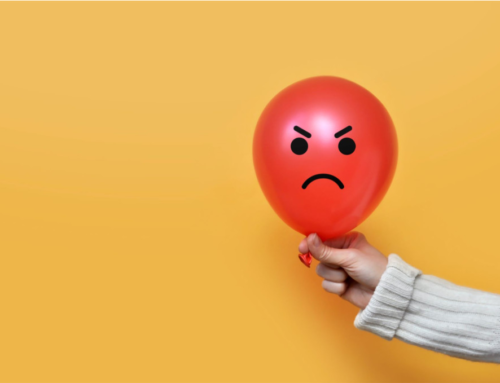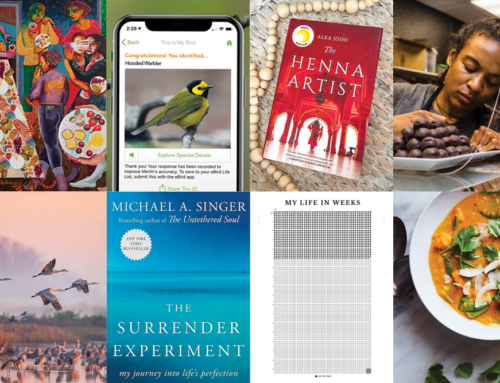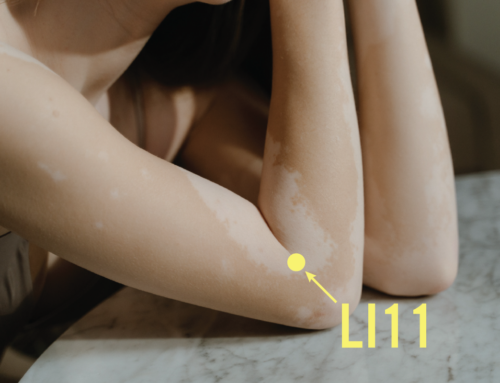Ever wonder why your acupuncturist adds a few needles to your ears during acupuncture? This is because the ear holds dozens of acu-points that can treat every part of the body. In fact, the practice of ear acupuncture, is considered a standalone therapy because the ear is a microsystem, ie. a self-contained system within the whole system. You can actually receive an excellent treatment for the whole body only by treating the ear! Though a powerful therapy in and of itself, auricular acupuncture (referring to the ear) is often folded into a whole body acupuncture session to enhance the effects of treatment.
A Brief History
Auricular acupuncture was first mentioned in Chinese Medical texts over 2,000 years ago. Despite this early mention of the ear as a means of diagnosis and treatment of disease, auricular therapy was not commonly woven into the practice of Chinese Medicine until the 1950’s when French neurologist Paul Nogier researched and developed the modern practice of auricular acupuncture. His interest was sparked after observing a colleague treat back pain by cauterizing a point on the ear. With rigorous study and observation he developed a neurological representation of the whole body on the ear as it relates to brain function also called a homunculus.

Targeted Treatments with Protocols
Auricular acupuncture is heralded for its efficacy, simplicity and ease. In particular, it became an easy way to treat patients for targeted issues, birthing two now well-known protocols.

Frustrated with methadone as a limited treatment option and with no access to other detox services, community activists (the Young Lords, Black Panthers and the United Bronx Drug Fighters) demanded a drug detox center at the local Lincoln Hospital. It was here that the NADA Protocol was introduced and refined over the years as a successful, simple and highly effective tool in the recovery process.
This grassroots, activism-based effort provided a low-barrier, low-cost, medication-free recovery plan, though this protocol is now used to treat more than addiction.

Much research has been done on this particular procedure showing that pain relief is not only highly effective but long lasting. For this reason, Battlefield Acupuncture is not only used in the field but has widely been adopted by many VA facilities to treat Veterans with acute and chronic pain. Current research is underway to study the long term effects of Battlefield Acupuncture and its potential to decrease the use of opioids.
Our Favorite Points Right now (and maybe forever)
Though there are countless combinations of auricular points to choose from to treat a myriad of conditions, these 3 powerhouse points are excellent for calming the nervous system and grounding us back into our bodies:

Shen men or Spirit Gate is most widely used as a sedative point. It quiets the heart, calms the spirit, reduces pain and inflammation, eases anxiety, and promotes detoxification.

Point Zero or Diaphragm is grounding and centering. This point reduces tension, promotes deep breathing, supports the solar plexus and all organ systems between the diaphragm and umbilicus.

Sympathetic is a point that helps us move away from the characteristic state of “fight or flight” to a regenerative “rest and digest” parasympathetic state.
Try Auricular Acupuncture at Home with Ear Seeds
Ear seeds are a little piece of metal such as stainless steel or a traditional vaccaria plant seed stuck to an adhesive backing. They are used as an alternative to needles or as a means to take the treatment home after needles are removed. The application of ear seeds to specific points provides light pressure that has the same gentle effect on the nervous system as described above. Though an acupuncturist can send you home with ear seeds in your ear, applying them yourself requires no special training and is a lovely DIY means of self care.
Ear seeds can be purchased in-clinic or mailed out – just give us a call at 410-235-1776 to place your order.
Sources:
Oleson, Terry. Auriculotherapy Manual: Chinese and Western Systems of Ear Acupuncture. 2003.
Ly, Vivian. Battlefield Acupuncture: A Non-pharmaceutical Pain Reduction Option. 2018.
Abbate, Skya. Chinese Auricular Acupuncture. 2004.
Mitchell, Ellinor R. The Lincoln Story.





